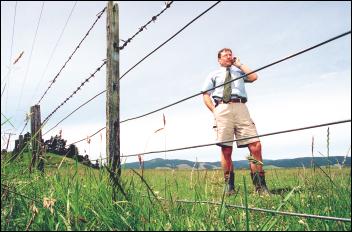|
The expansion of dairying in South and West Otago had also caused movement, with vendors seeking to buy other farms. Southland dairy land prices had steadied after rising 10% late last year, with top units that were making $9000 a hectare earlier last year now bringing close to $10,000. Invercargill valuer Hunter Milne, of Chadderton Valuation, said prices for the best dairy units were getting close to that being paid in the North Island. "Prices have moved up quite rapidly in the last six months," he said. An exceptional Southland dairy farm sold before Christmas for $17,000 a hectare, more than $2000 a hectare above previous levels. Buyers had anticipated the New Zealand Dairy Group lifting its moratorium on new suppliers and that announcement, just before Christmas, had had little effect on Southland land prices. The higher cost of company shares to supply milk to NZDG, about $2000 a hectare, could reduce land prices, he said. "The impact of the share value component is yet to be seen but it could mean the land and improvement value could drop," Mr Milne said. Rabobank Otago and Southland regional manager Jeffrey Morrison said the rapid rise in land prices had prompted financiers to watch the market closely, given the firming currency and international economic downturn. "It's moved quickly. Let's hope it doesn't move as quickly again as it has. I will be looking for it to consolidate," he said. There was consensus the New Zealand dollar would continue to appreciate and could hit US50c later this year. The relatively cheap price of South Island land suitable for dairying and indications of an end-of-season payout of more than $4.50 a kg of milk solids was underpinning much of the land price rise. Mr Morrison said the proposed merger of NZDG and Kiwi, their policies towards new suppliers and indications of a review on the cost of buying company shares could influence future prices. Farmers need to be conservative in budgeting for land purchases, given the major effect the low value of the New Zealand dollar was having on their incomes. In hand with the increase in land price has been a $400 rise in the price of dairy cows from last season. Reid Farmers livestock manager Alan Eason said cows that last year were selling for $1150 were this year fetching between $1500 and $1600 because of low supply and high demand. In recent weeks, prices had levelled off, he said. .
|

